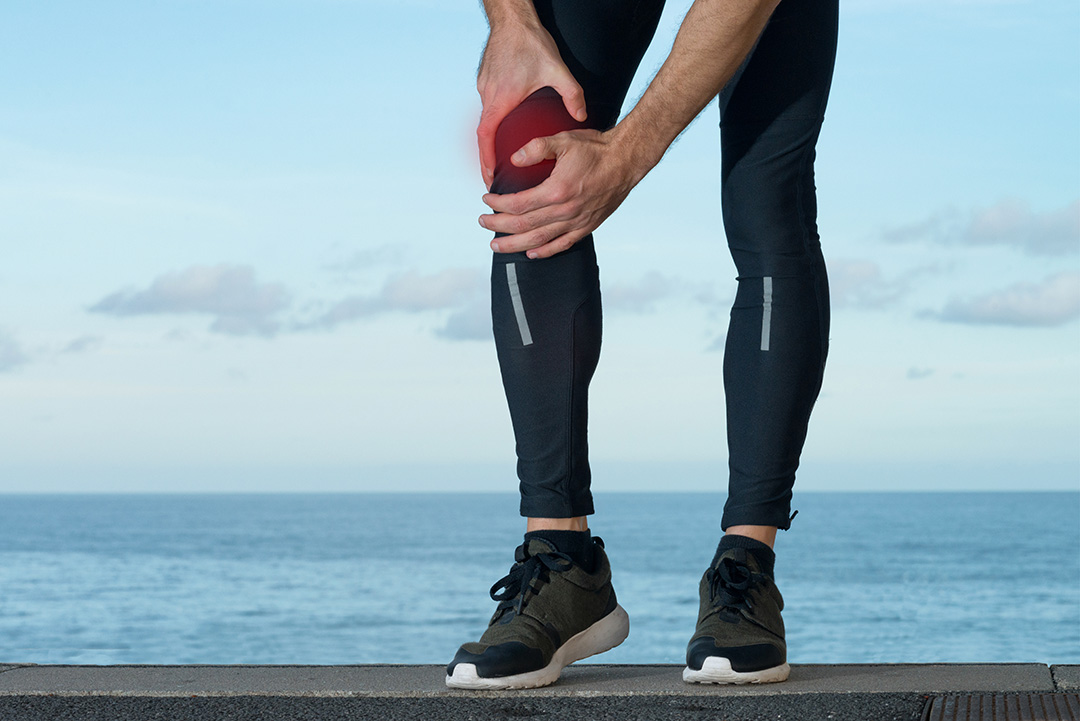
Knee is the largest joint in the body and any injury to it affects the performance of sportsmen, some of which can even prevent them from further participation. It’s the commonest injury in sports. Overall, knee injuries make up about 55 per cent of all sports injuries.
The knee joint is formed by three bones — the lower end of femur (thigh bone), the upper end of tibia (leg bone), and the patella (kneecap). Two cartilage discs called menisci allow the bones to glide smoothly against each other, absorb shock, and act as a cushion between the femur and the tibia.
Fluid-filled sacs called bursa surround the outside of the knee. The knee joint is stabilised by muscles, tendons, and four critical ligaments: the anterior cruciate ligament (ACL), the posterior cruciate ligament (PCL), the medial collateral ligament (MCL), and the lateral collateral ligament (LCL).
Any of these structures can get injured during sports, either isolated or combined. Each injury and their management are different. So it’s very essential to know what’s the mechanism of injury and what’s the structure involved. These injuries can be either acute injuries or overuse injuries.
Acute injuries: These are the injuries that occur suddenly during an activity, the most common acute injuries are ACL and MCL sprains (a sprain is the stretching or tearing of a ligament) and meniscal injuries. An ACL injury can occur when an athlete changes direction quickly, stops suddenly, or lands from a jump. MCL injuries often occur in contact sports when the outside of the knee joint is struck and meniscal injuries happen due to abnormal twisting of a weight bearing knee joint. Fractures of the above mentioned bones and dislocations can also occur, but are fortunately rare.
Overuse injuries: These are caused by a repeated action or continuous pressure on the knee. Common overuse injuries include Bursitis; inflammation of the bursa, jumper’s knee; inflammation of the patellar tendon, the cord-like tissue that joins the patella (kneecap) to the tibia (shin bone) and Patellofemoral Pain Syndrome (runner’s knee); muscle weakness or minor softening of the cartilage under the kneecap that may cause an abnormality in the movement of the patella over the femur. It’s not just for runners. Anyone who spends time doing things that make you bend your knees a lot, like walking, biking, and, jumping, can get runner’s knee, an aching pain around the kneecap. The symptoms vary depending on the lacation and severity of injury. These include swelling and stiffness, warmth and redness, limping, instability, inability to fully straighten the knee, and locking of the knee.
In acute ligament injuries sometimes the player can hear a popping sound with pain which is followed by swelling of the knee. The knee feels unstable and difficult to walk. However in minor degree of injuries they can continue to play with discomfort and observe swelling and increased pain later. If there is isolated minor injury to meniscus or cartilage, the player may feel only mild discomfort and pain initially which will be followed by swelling in 6-8 hours.
In overuse injuries people will have a dull aching or pricking type of pain which gets aggravated with specific activities. There will be site specific swelling and tenderness. There can be increased local temperature and redness in overlaying area. Many of these conditions can be treated with anti-inflammatory medications, rest, activity modification, and proper physiotherapy. However, some require surgical treatment.
ACL injury: Frequently, ACL tears require surgery to replace the ligament. Usually this will be done as an arthroscopic procedure with small incisions. Commonly a tissue is taken from patient, to be used as a graft to replace the torn ACL. Physical therapy is necessary to rehabilitate the knee and it is usually at least six to twelve months before athletes can return to their normal activity level.
MCL injury: Fortunately, MCL tears do not usually require surgery. Treatment usually includes rest, anti-inflammatory pain medications and sometimes a brace is necessary to keep the knee from moving from side to side. A surgery will be required in some severe tears with associated multiligament injuries.
Meniscal injury: Symptomatic tears of meniscus are usually treated with arthroscopic surgery. It requires repair or partial/complete excision depending on the type and site of tear.
Patellar tendinitis and Bursitis: Treatment for patellar tendinitis and bursitis normally includes rest, icing, and anti-inflammatory pain medications with physiotherapy. The overuse injuries will require surgical treatment only if they are not responding to adequate non operative treatment. It is essential to consult an orthopaedic surgeon for proper diagnosis and treatment.
Dr Shriharsha is specialist orthopaedic surgeon at Burjeel Hospital.